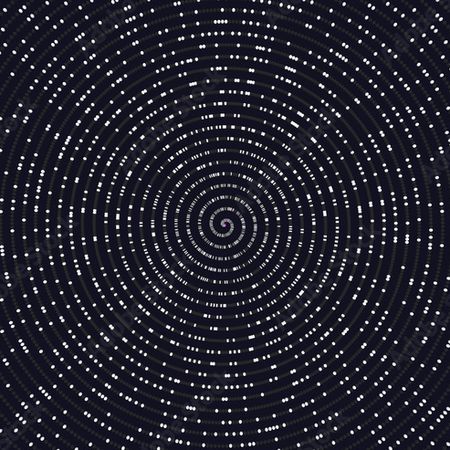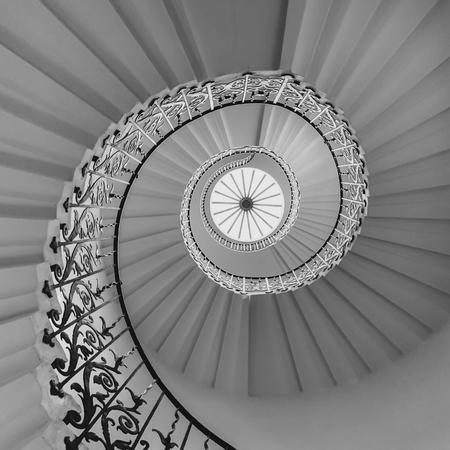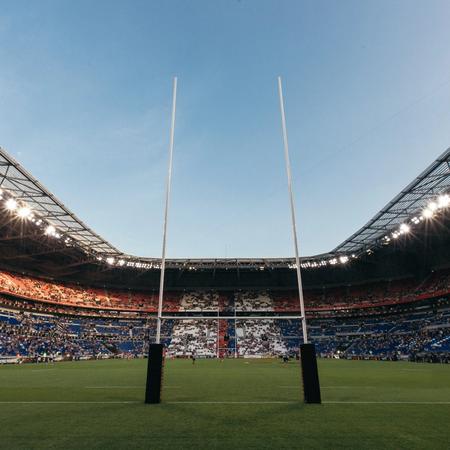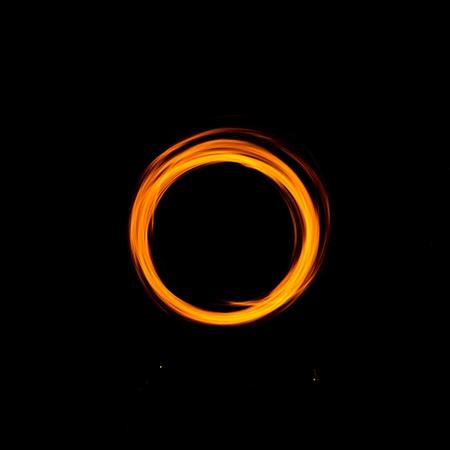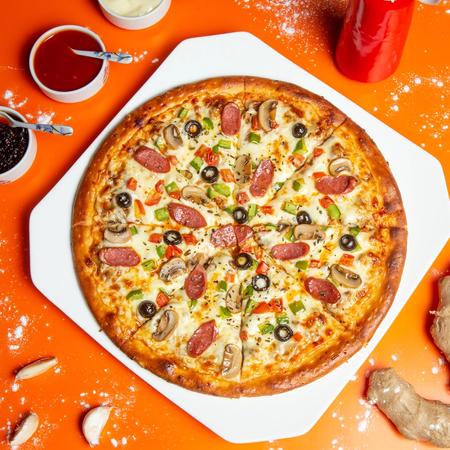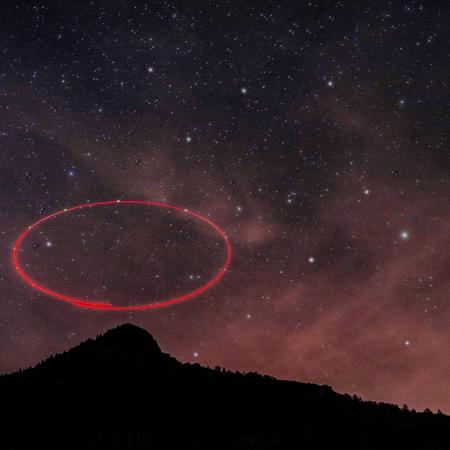“We need to make time for the kind of deep thought that leads to understanding. This is easier said than done in a world where our days are driven and defined by the distraction of the digital devices that have revolutionized our lives. Consider for a second how many hours each day you devote to consuming, reacting and responding to the inputs of others via e-mail and social networks. How much time do you devote to creating, thinking and questioning?” - Bernadette Jiwa, Hunch
Our first 5 steps
For those of you who’ve stayed with me so far, I think you will be rewarded. In the circle example, we used the points and . To see the WHY, let’s generalize by using the points and rather than and . Then, redo the math but, as before, keep the -plane in “Field Goal Position.”
We’ve gone through detailed math to get our answer, and we are so close to the why. To see the why, let’s write a recipe or algorithm for solving the field goal problem using a circle.
1. Draw a circle with diameter , which means its radius is .
2. Draw a line tangent to the circle and label it as the -axis. For now, label the tangent point .
3. Draw a vertical line through the left side of the circle that is perpendicular to the -axis. Define this as the -axis. Label the points of intersection of the circle and the y-axis and , with as higher point. Notice because of the symmetry of the circle, is the diameter of the circle. If we wish, we can label the origin as , which is the intersection of the -axis and -axis.
4. Find the center of the circle by drawing two lines. One line is parallel to the -axis and goes through the point where the -axis is tangent to the circle. The other line is parallel to the -axis and intersects the midpoint between and . This second line is . The center of the circle is the intersection of these two lines. Label the center as .
5. Create a triangle as you see in Figure 1 by drawing a segment from point to the center of the circle . We know this triangle is a right triangle because the line is perpendicular to the -axis. In the following steps, we will identify the length of each side of the triangle.
Our final 4 steps
6. Consider the length of the hypotenuse, which is the segment from point to the center of the circle. Because the endpoint is on the circle and the other endpoint is the center of the circle, then the length of the hypotenuse is the radius of the circle. The radius is the diameter, or . Thus, the length of the hypotenuse is .
7. We can get the length of the sides that are part of the -axis. We know the distance between the goal posts is . Thus, the distance to the halfway point must be half that distance or . That means the length of the side of the triangle that is part of the -axis is .
8. We now have 2 sides of our right triangle. The length of the third side is unknown. We can solve for by using the Pythagorean theorem. As illustrated in Figure 2, our equation is . Solving for , we get . Since distance is positive, .
- Note that the -coordinate of the center of the circle is the -coordinate of the tangent point . That means the solution to our field goal problem, , is always the length of the side of this triangle. Because of how we defined the circle and because the Pythagorean Theorem is always at play, the value for is always , which is the geometric mean. The geometric mean reappears, and this confirms that the circle solution is consistent with our calculus solution. Also notice in Figure 3 that the center of the circle always has the geometric mean as the -coordinate and the arithmetic mean as the -coordinate.
Remember, this is true for all circles because there is nothing special about the values for and . The only unique move we made was how we placed the circle in the -coordinate system. But where we place the circle does not change any of the properties. It just makes the properties easier to identify.
Pizza time
To illustrate this solution from a different perspective, let’s leave the -plane and choose a more interesting plane: a pizza box. Assume we have a circle pizza that fits snuggly in a square box. That means the intersection of the pizza with each side of the box is a point of tangency. Let’s assume we have a 1-” pizza and we only care about two dimensions of the pizza. We’ll ignore how thick it is.
Choose one side of the box as the bottom of the pizza box. If it helps, you can think of the bottom of the box as the -axis. Then, cut the pizza in a line parallel to the left side of the box, which is perpendicular to the bottom of the box. Where should we make this cut? Notice our pizza has a 10” diameter or 5” radius, which is consistent with our previous solution. Thus, let’s make the first cut consistent with that solution in Figure 4.
That means the cut is 4” from the center, which is 1” from the left side of the box. Because the math for this problem is the same as the previous, we know the distance from the bottom of the box to the first cut is 2, and the distance from the bottom of the box to the top of the cut is 8. Of course, because of the symmetry of the circle, the distance to the top of the box is also 2.
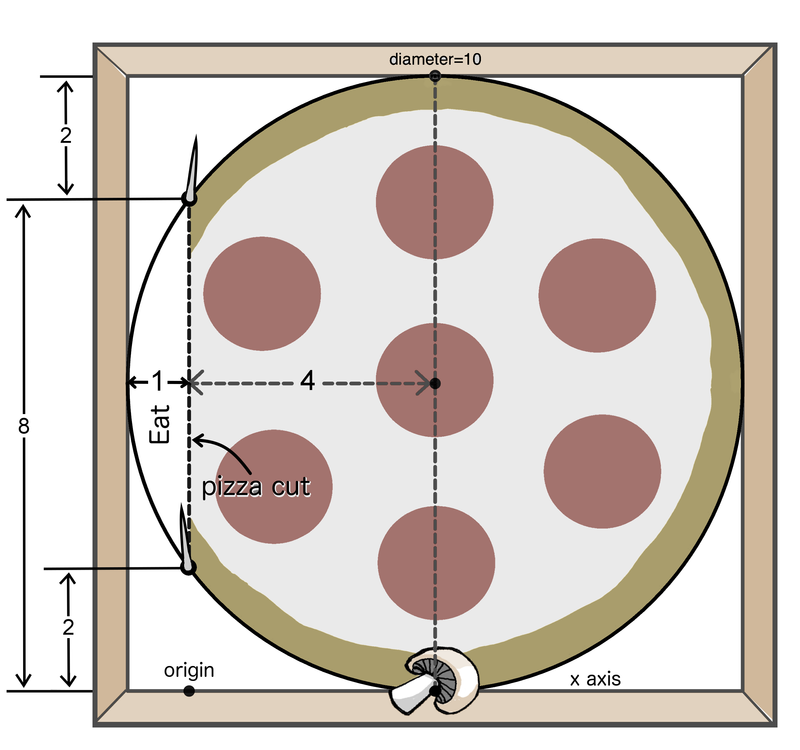
If we want to return to the field goal perspective, then these points are the goal posts. If you want, you can put toothpicks at these points for a visual aid. Thus, our field goal posts are set. Where is the solution to the field goal problem? We know it is somewhere on the -axis, which is the bottom of the pizza box, and it is the tangent point to the circle through the goal posts. If you like the visual strategy, you can put a mushroom at the point of tangency to represent the football. For any point on the bottom of the box, you can visualize that the maximum angle to kick the field goal is exactly where the pizza touches the box.
Isn’t this solution much easier than our initial calculus solution? No inverse tangent functions are needed here! However, notice we just repeated the math from before. If the math is the same for the pizza story, why do we bother with a pizza story? The reason the pizza story is helpful is it makes our next move easier.
The infinite field goal problem: Change in perspective
Let’s keep the pizza from our previous example and make another cut. Our first cut was 1” from the left edge of the box. Let’s move another 1” to the right of our previous cut and make another cut parallel to the first but 1” farther to the right. Now, move the toothpicks to where the new cut occurred. What do you observe in Figure 5?

Observe we are still in “Field Goal Position” except we move our goal posts to where our new cut is at. What happened to the football? Where is the optimal place to kick the field goal for this new position? Notice the tangent point to the circle didn’t change because our circle didn’t change. We just moved the goal posts to a different location on the same circle.
Like we do so often in math, we just changed our perspective. Before, we fixed our goal posts and solved for . That means was our variable. This time, we kept the circle the same and, because the solution to the problem is connected to the circle, the solution did not change. What changed was the location of our field goal posts. What is the position for the new field goal posts?
Previously, the distance between the bottom of the box and the first goal post was 2”. Now, the distance is only 1”. Notice we had also moved the goal posts 1” closer to the center of the pizza. It is only a coincidence that the goal posts also moved exactly 1” toward the edges of the box. That means our goal posts are 1” and 9” from the bottom of the box. Then, we can calculate the geometric mean of 1 and 9 as , which matches the distance to the center of the circle.
The method we are applying here is defining the position of the football and solving for the position of the goal posts. This is the reverse order of the method we were using originally.
Notice when we fix the circle and fix the position of the football as the point of tangency, then the football is always in the optimal solution for any cut we make to the pizza. Our only requirement is that the cut must be perpendicular to our -axis. That leads to the amazing discovery that if we observe a pizza fitting snuggly in a pizza box, then we can imagine an INFINITE number of field goal solutions. All we need to do is to make another vertical cut and move the goal posts to the edge of each cut.
Circling Back
Do you see the math that changes and the math that doesn’t change after each cut? Let’s make one more cut to the pizza to illustrate. We cut one inch closer to the center, so the distance to the center decreases from 3 in Figure 5 to 2 in Figure 6.
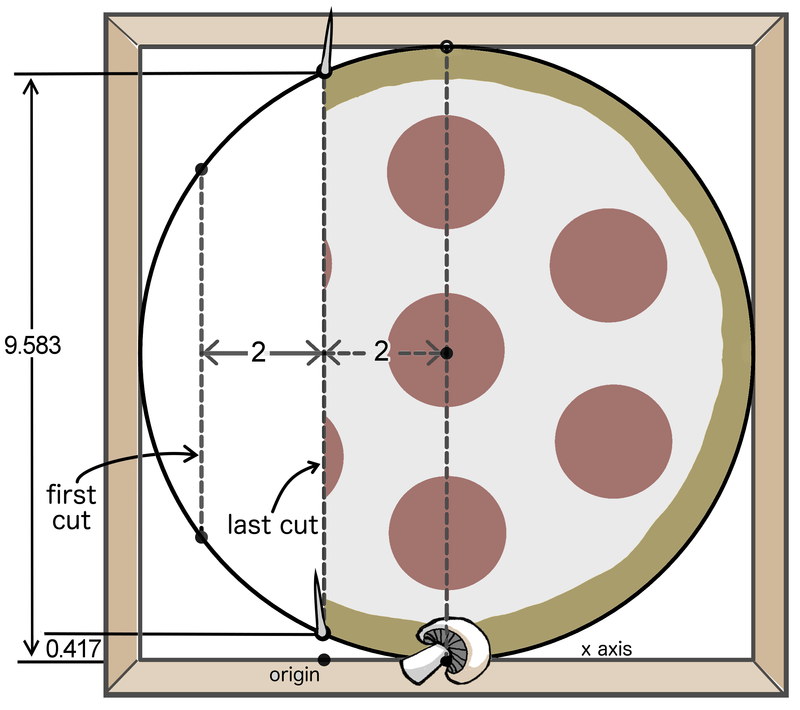
Because we cut 1” closer to the center, we reduce our geometric mean by 1, from 3 to 2. Let’s review the math by identifying what changes and what remains the same. Here is the math that doesn’t change:
- The radius remains 5.
- The distance from the center of the circle to the bottom of the circle remains the radius. which is 5. We can write this distance as where and are our normal field goal positions. If we were on the -plane, then this is the vertical distance, or the -coordinate of the center.
- The solution to the field goal problem remains at the point where the pizza touches the pizza box, or where the circle is tangent to the -axis.
What is the math that changes with each cut?
- We create a new and . For this next cut, and .
- If we use the field goal position, then this creates a new -axis. Notice this is just a convention we developed to simplify the math, but it doesn’t change the underlying results. This means that the origin gets shifted along with the change in the cut, so it is one inch closer to the optimal angle.
- Unlike the arithmetic mean, the geometric mean changes as we change and . Now, the geometric mean is , which we already knew.
- As our cuts get closer to the center of the circle, the distance between and increases and the geometric mean decreases. We don’t have to analyze this from a formula. We can observe it because as the cuts approach the center of the circle, the distance from the middle of the goal posts to the center of the circle, which is the geometric mean, decreases.
- Let’s go “full circle” and leave the pizza story and return to the circle perspective. In Figure 7, we show our familiar setup, but now the geometric mean is 2 and the radius remains 5. Hopefully, it is clear why the tangent point to this circle is the optimal angle while any other point on the -axis is not optimal.
We have viewed this field goal problem from many angles and perspectives. Many of them probably appeared complicated, at least initially. But this picture shows how simple the solution is when viewed from a circle perspective.


